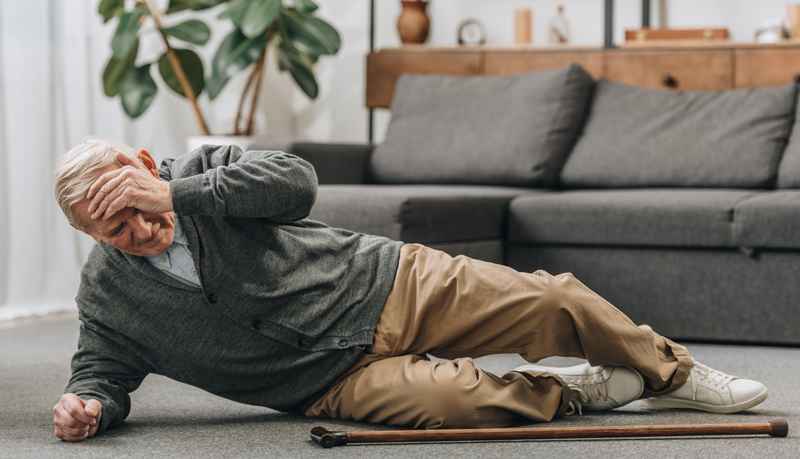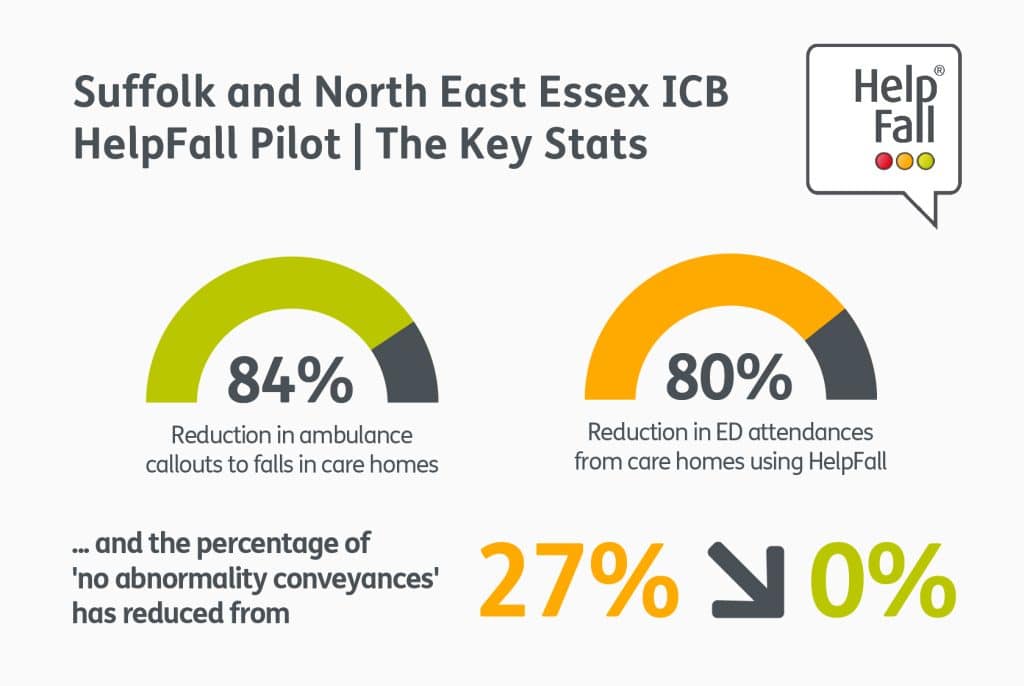How HelpFall is transforming post falls management in care homes: SNEE ICB story | 4 Webinar Insights
At the recent webinar, ‘How HelpFall is transforming post falls management in care homes: The SNEE ICB story‘, we heard from Suffolk and North East Essex ICB about how they have successfully upskilled and enabled care homes to safely assess and respond to falls, using the Raizer 2 and HelpFall post-falls decision support tool. Joining us from the ICB were Mark Shorter, Head of Transformation, and Donna Chandler, Care Homes Nurse.
There was plenty to take away and action from the webinar, so in this article, we’ve pulled out 4 key insights for you.

1. Policies in care homes can leave staff reticent to respond to falls themselves
As explained by Mark Shorter in the webinar, safeguarding policies and procedures in care homes around fallen persons can mean care staff are hesitant to lift fallen residents from the floor, leading to them calling the ambulance when not always necessary.
And as we all know, calling the ambulance to respond to minor and no-injury falls has a negative impact on the pressure on the ambulance service, as well as the outcome for the fallen person who will have to wait on the floor for an extended period of time.
“A lot of the policies were saying ‘call 111’ or ‘call 999 immediately’ when actually that was not necessary for a good proportion of these patients.”
Mark Shorter, Head of Transformation
NHS Suffolk and North East Essex ICB
2. Close engagement with the care homes was key to the success of the SNEE ICB project
Before the project with care homes had even started, Donna Chandler and the care home nursing quality team had established a very good relationship with the care homes and understood the pressures and challenges they were facing. This was key in ensuring the care homes were fully on board when the pilot of the Raizer 2 and HelpFall tool first started, and that they understood the benefits it would be bringing to them and their residents.
Also, every care home received in-person training for the Raizer 2 and HelpFall, and regular communication with the care homes was maintained throughout the project, from both the ICB’s care home team and Felgains, which ensured that all of the homes were kept engaged and the project had the best chance of being successful.
“There was a lot of work that went into engaging with the care homes to discuss whether it was something they would be willing to undertake……So we really had that buy-in from all of the 20 care homes that were part of this pilot.”
Mark Shorter, Head of Transformation
NHS Suffolk and North East Essex ICB
3. HelpFall’s reporting function is giving care home staff confidence in their decisions
Every time a care home staff member assesses a faller using HelpFall, they receive a report of the decision they made, the steps they took to get there, and the action they took as a result. Just by having their decision-making process documented, HelpFall is giving care home staff confidence that they doing the best for their resident and for the whole system.
The report also gives the care home the opportunity to do a root-cause analysis of the fall and put the appropriate measures and interventions in place.
“There is a real sense of confidence among the care homes staff that they are doing the right thing, and they feel reassured by the app that they are making the right decision.”
Mark Shorter, Head of Transformation
Suffolk and North East Essex ICB
“Care staff have felt empowered using the HelpFall app because it’s given them that assurance that they can do a standing risk assessment right there and then and it’s documented; that is their clinical rationale”
Donna Chandler, Care Homes Nurse
Suffolk and North East Essex ICB
4. As well as reducing ambulance callouts, SNEE is reducing no-abnormality conveyances from falls
As well as reducing the number of ambulance callouts to minor and no-injury falls in care homes, SNEE have reduced the percentage of no-abnormality conveyances from falls from 27% right down to 0%, through the intervention of the Raizer chairs and HelpFall tool.
No-abnormality conveyances are unnecessary conveyances to hospital where there is no injury or complications apparent. They are typically a result of an unnecessary ambulance call-out due to a failure to suitably assess a fallen person before calling 999 and cost the NHS precious time and money that could be spent on more urgent calls.

As these 4 key insights show, the project that Suffolk and North East Essex ICB have done with the Raizer 2 and HelpFall tool is clearly upskilling care home staff and improving the outcomes of falls in care homes.
To watch the recording of the webinar and view the presentation slides, please click here.
Click here to find out more about HelpFall
And click here to find out more about the Raizer Chair
Related articles
HelpFall vs ISTUMBLE – An Honest Comparison for ICBs
How do you know if a fallen person is safe to lift from the floor?
What Is A Long Lie Fall? Causes, Impact, and Prevention
Get in touch
Got a question or want to send us a message? Let’s talk.